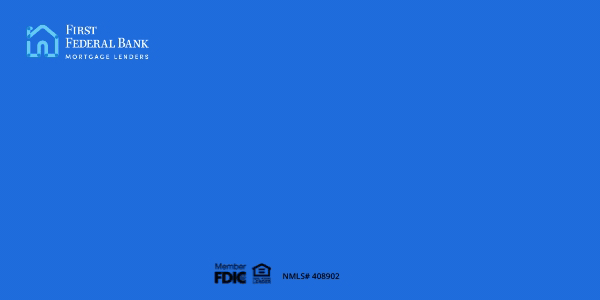When buying a new home, a 20 percent mortgage down payment has long been touted as the ideal. However, many lenders no longer expect homebuyers to come up with such a large lump sum and are making mortgages available for far less money down.
If you are in the market for a new home but don’t have cash in hand for a 20 percent down payment, read on to find out what alternatives are available so you can start shopping for the mortgage that is right for you.
Four Mortgage Options That Don’t Require a 20 Percent Down Payment
Many first-time homebuyers don’t realize that a conventional, 20 percent down mortgage isn’t their only option. There are several nonconventional home loans available to qualified borrowers that make it easier for buyers with less-than-perfect credit or other mitigating circumstances to become homeowners.
1. FHA Loan
FHA home loans are mortgages that are insured by the Federal Housing Administration (FHA). Although you don’t have to be a first-time homebuyer to qualify for an FHA loan, many new borrowers opt for these mortgages due to having limited funds for a down payment or a lower credit score.
To qualify for an FHA loan, you need, the ability to put down 3.5 percent of the purchase price, and a debt-to-income ratio of 59.99% percent or less. It’s also important to note that borrowers who put down less than 20 percent will be required to carry mortgage insurance.
2. VA Loan
VA home loans are another popular alternative to a conventional mortgage. These loans are guaranteed by the Department of Veterans Affairs (VA), but they do have more stringent qualifying criteria than an FHA loan.
To qualify for a VA loan, applicants must meet the minimum service requirements as defined by VA, which include:
- War veterans
- Active duty military personnel
- National Guard and Reserve members
- Academy cadets and midshipmen
- National Oceanic & Atmospheric Administration officers
- Public Health Service officers
- Spouse of service members who died in the line of duty or as a result of a service-related disability
VA loans offer exceptional benefits, including lower interest rates than conventional home loans, no mortgage down payment, no mortgage insurance, and less-stringent credit requirements.

3. USDA Loan
The United States Department of Agriculture (USDA) rural development program creates homeownership opportunities for buyers who otherwise wouldn’t qualify for a loan. A USDA-backed mortgage allows homebuyers or owners with moderate to very low income to buy, renovate, or refinance a home in a designated rural region.
USDA loans are a great option for first-time homebuyers because they don’t require a mortgage down payment, and they offer flexible credit guidelines. Like FHA loans, lenders who provide USDA home loans do require mortgage insurance with less than 20 percent down payment as well as a one-time up-front fee due at closing.
4. Conventional Loan with Private Mortgage Insurance
For homebuyers who meet all of the lenders’ criteria other than the ability to put down 20 percent, a conventional home loan with private mortgage insurance (PMI) may be your best option.
PMI is a type of mortgage insurance that mitigates increased lender risk when a homebuyer has less than a 20 percent down payment. There are several different ways to pay PMI, each with its own benefits and drawbacks:
Borrower-paid PMI
With this common type of PMI, the borrower makes monthly payments either rolled into their mortgage payment or separately. When equity in the home reaches 20 percent, the borrower can request cancellation of the PMI.
Benefit: The borrower pays PMI over time, which frees up cash.
Drawback: Rolling in PMI increases the borrower’s monthly mortgage payment.
Up-front/single premium PMI
This type of PMI is paid in one lump sum rather than monthly. The borrower usually pays, but under certain circumstances, the seller may be willing to pay the buyer’s PMI.
Benefit: Paying up front means your monthly mortgage payment is lower.
Drawback: The borrower loses their up-front money if they sell before reaching 20 percent equity in the home.
Split-premium PMI
Split-premium PMI is a combination of borrower-paid PMI and up-front PMI. With this option, the borrower pays some of the PMI at closing, then splits up the rest into monthly payments.
Benefit: The borrower pays less per month than they would with borrower-paid PMI and have less cash outflow at closing than with up-front PMI.
Drawback: If the seller won’t pay for the borrower’s PMI, it might be better in the long term to apply that lump sum to the down payment instead of to PMI.
Lender-paid PMI
Occasionally, lenders will offer to pay the borrower’s PMI, but, in exchange, they charge a higher interest rate on the loan.
Benefit: The borrower has a lower monthly payment than they would if they rolled PMI into the mortgage.
Drawback: The borrower can’t cancel PMI when 20 percent equity is reached because PMI is part of the loan.
Get the Lowdown on Low Mortgage Down Payment Home Loan Options
Buying your first home (or your third) doesn’t have to keep you up at night. The team at FFB Mortgage Lenders specializes in all types of home loans, and we’re happy to answer any of your questions.
Contact us, and one of our mortgage experts will walk you through every scenario to help you find the mortgage that best meets your specific needs and circumstances. And when you’re ready to apply for a mortgage, we can help you with that too.
The content on this site is intended for informational purposes only and should not be considered accounting, legal, tax, or financial advice. First Federal Bank recommends that customers conduct their own research and consult with professional legal and financial advisors before making any financial decisions. Links to third-party websites may be provided for your convenience; however, First Federal Bank does not guarantee the reliability, accuracy, or safety of the information, products, or services offered on these external sites. We are not liable for any damages resulting from the use of these links, and we do not investigate, verify, or endorse the content or opinions expressed on any third-party sites.



-1-1.png)